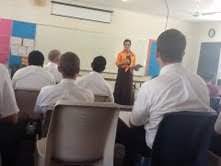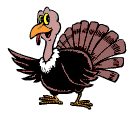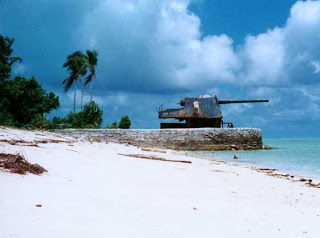 |
| Our children and Grandchildren - wanted us to join them for Thanksgiving in Richfield - so they improvised |
We took the Ronnenkamps to lunch at a local restaurant. Note how they spell Chinese (Chineese). The food was good. Elder Ronnenkamp was Superintendent from Granite District in Salt Lake. So we have known them for many years. It was fun to host them.
Also on Thursday we had Thanksgiving dinner for the young Elders and Sisters from Tarawa and surrounding islands. We had turkey, ham, dressing, cranberry sauce, pumpkin pie and all the trimmings. It was the first time the Missionaries from Tarawa and other islands in the South Pacific had eaten Turkey and pumpkin pie. They seemed to enjoy it, because there wasn't many left overs.
| Missionaries eating Thanksgiving Dinner |
| Sister Missionaries enjoying Thanksgiving |
| Food prepared by Senior Couples |
| Sister Janis Ronnenkamp speaking at Graduation |
| Elder Ronnenkamp speaking |
| As part of each Musical Selection students sang solos and duets |
| Meauna, one of our FHE student getting a Form 7 Certificate |
Hawaii.
Following graduation a large meal with a roasted pig (snout, tail and all was served along with many other local dishes including lobster tail, raw fish fried chieken, lots of rice, bread fruit and many other dishes. The special guest ate in one location and the students and parents ate by the tennis courts.
| Decorated stage on tennis court with fountain and lighting |
| Decorated Pole at Center court with banners going to all 4 corners holding balloons |
The program was in Kiribati so we didn't understand much until they started pointing at us again. Elder and Sister Ronnenkamp were asked to lead a Conga line with Sister Thorne and I right behind. Every one was supposed to imitate each move the Ronnenkamps made and they moved around the basketball court.
It was pretty evident that compared with the Kiribati dancers and students, the senior missionaries don't have a lot of dance moves at least we didn't. Several other dances followed with students dancing with their parents, with teachers, with each other. It was a very fun evening for all involved and dance continued for several several hours.
Saturday evening was the Ward Christmas and farewell party for the students. Another large meal with roasted pig and all kinds of salads, fish, sausages, rice, bread fruit and other native dishes. The dinner was supposed to start at 6:00 pm but started at 7:30 by the time they got all the food and students rounded up.
The dinner was followed by each Family Home Evening Group putting on a skit or two. There were 12 different FHE groups with 8 to 10 students each that performed. Our group did two numbers. The first was a lip sync of "We Wish You a Merry Christmas". They really hammed it up and had the audience in 'stitches'. Then they did the 'Hokey Pokey' in their pillow head costumes, which really had everyone laughing so hard they nearly fell off their chairs.
The party finally ended just before midnight, it was lots of fun. I think everyone really enjoyed each of the skits. Our group did a great job, it was amazing how some of the ones that seem very shy. Once they had a pillowcase over their head and were on stage, they really "hammed" it up.
The Ronnenkamps, Annie, Noah, and Thornes The |
two video clips are of our FHE visiting at the table and doing their Hokey Pokey dance.
| Form 7 - Institute graduates |
Sunday evening was Institute graduation, most of the students were in Sister Thorne's two classes, so she especially enjoyed seeing each get a certificate and then she talked with several of them after the ceremony. There are a couple of photos of the graduation below. President and Sister Shaw were the guest speakers at Institute graduation. It was a good way to top off the school year.
But the week is still not over, on Monday the senior couples prepared a full course thanksgiving meal to thank the Service Center employees for helping the missionaries and the school. Many of them were not at work for various reasons, so Pres. Shaw invited the school administration, the cooks, and a few teachers that were in the area to share the meal with us. Sister Thorne prepared a large pot of potatoes, which didn't last very long. Again many of them had never tasted turkey and they had no idea what stuffing or dressing was nor gravy. But they seemed to really enjoy the meal, which was topped off with cake and ice cream.
On Tuesday was Zone Conference. Pres. and Sister Shaw provided very inspirational messages in the morning. A lot of good counsel was provided in the after noon session. He then used the ITEP office to interview each of the missionaries. He said their were 1129 baptisms in the mission last year and should be nearly that many this year. The work is picking up in the Marshall Islands. When you consider there are around 60 missionaries, the work seems to be going very well.
 |
| Sister Shaw providing instruction at Zone Conference |
























































